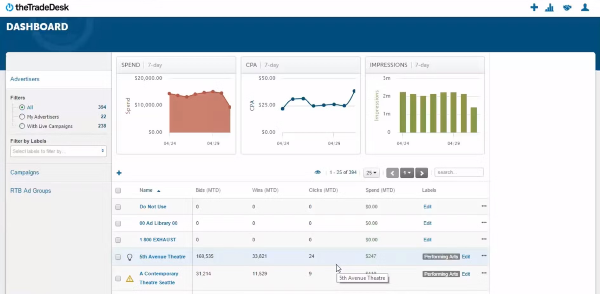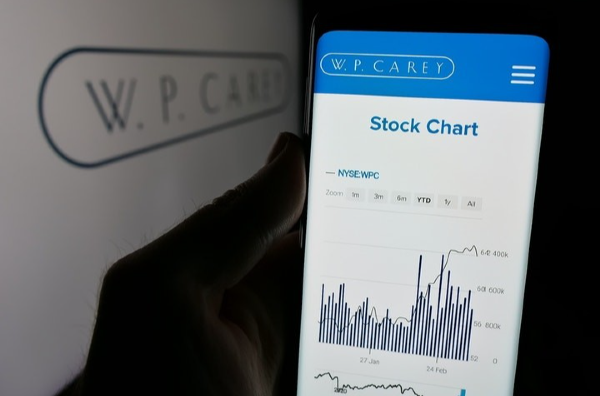Adobe Inc. (NASDAQ: ADBE) has established itself as a global leader in digital media and marketing solutions, consistently delivering innovation across its product portfolio. With strong financial performance and a focus on subscription-based revenue, Adobe’s stock draws significant investor interest. In this article, we’ll explore Adobe’s business model, financial metrics, competitors, and valuation to determine if it’s a worthy investment.
Adobe’s Business Segments: A Deep Dive
Digital Media Segment (75% of Revenue)
The digital media segment is Adobe’s largest revenue driver, encompassing popular subscription-based products like:
- Adobe Creative Cloud: Includes Photoshop, Illustrator, After Effects, Premiere Pro, and more.
- Adobe Reader & Adobe Sign: Streamlining document management.
These products generate stable and predictable revenue due to Adobe’s subscription model, which ensures customers always have access to the latest software updates.
Digital Experience Segment (25% of Revenue)
The digital experience segment, powered by the Adobe Experience Platform, helps businesses optimize customer interactions using tools like:
- Data Analytics
- Marketing Campaign Management
- Advertisement Creation
Legacy Products
While legacy products make up only 1% of revenue, they represent Adobe’s early foray into software solutions.
Geographic Revenue Breakdown
Adobe generates the majority of its revenue in the Americas, with over 50% coming from the United States. Additionally:
- EMEA (Europe, Middle East, and Africa): A sizable segment.
- Asia-Pacific: Represents Adobe’s growing global reach.
Despite its concentration in the Americas, Adobe is well-diversified across regions.
Financial Metrics: Stability and Growth
Revenue Growth
Adobe has shown steady revenue growth over the past decade, thanks to its shift to subscription-based services. This transformation has provided stable, recurring income. Analysts expect this growth to continue, driven by demand for Adobe Creative Cloud.
Net Income Stability
Adobe’s net income stability remains strong, even amid challenges like the COVID-19 pandemic. While net income dipped temporarily due to revenue spikes during lockdowns, the broader trend remains upward.
Net Income Margins
Adobe boasts impressive profit margins in the high 20% to low 30% range, placing it among the top companies in the S&P 500. These margins highlight Adobe’s ability to command premium pricing for its industry-leading products.
Free Cash Flow
Free cash flow has steadily increased, reflecting Adobe’s efficient operations and ability to reinvest in growth.
Stock Buybacks
Adobe’s declining shares outstanding indicate active stock buybacks, which enhance shareholder value by increasing the per-share worth of existing stockholders.
Balance Sheet: Strong and Stable
Adobe’s balance sheet showcases more cash than interest-bearing debt, reinforcing its financial strength and ability to weather economic fluctuations. This stability adds to its investment appeal.
Competitors: Identifying Market Dynamics
Adobe faces competition across its product lines, including:
- Apple: Competes with Adobe Premiere Pro (via Final Cut) and Photoshop (via photo editing tools).
- Other Digital Tools: Smaller companies offering niche solutions pose challenges but lack Adobe’s comprehensive suite.
While Adobe faces competition in specific areas, its broad portfolio and subscription-based model provide a significant edge.
Bull vs. Bear Case for Adobe
Bullish Factors
- Consistent revenue and net income growth.
- Robust free cash flow and high profit margins.
- Strong balance sheet and active stock buybacks.
Bearish Concerns
- Market saturation in subscription-based services.
- Competition from tech giants like Apple.
- Dependence on global economic conditions.
Conclusion: A Compelling Investment
Adobe’s strategic shift to subscription-based products and its dominance in digital media and experience tools make it a strong contender for long-term investment. With consistent financial performance and a proven business model, Adobe offers growth potential for investors willing to navigate competitive pressures and economic uncertainty.
What do you think about Adobe stock? Share your insights in the comments below!
https://youtu.be/GEvOOwbn2ys?si=WXq73miiUm_DjHhD































Adobe Inc. (NASDAQ: ADBE) has established itself as a global leader in digital media and marketing solutions, consistently delivering innovation across its product portfolio. With strong financial performance and a focus on subscription-based revenue, Adobe’s stock draws significant investor interest. In this article, we’ll explore Adobe’s business model, financial metrics, competitors, and valuation to determine if it’s a worthy investment.
Adobe’s Business Segments: A Deep Dive
Digital Media Segment (75% of Revenue)
The digital media segment is Adobe’s largest revenue driver, encompassing popular subscription-based products like:
These products generate stable and predictable revenue due to Adobe’s subscription model, which ensures customers always have access to the latest software updates.
Digital Experience Segment (25% of Revenue)
The digital experience segment, powered by the Adobe Experience Platform, helps businesses optimize customer interactions using tools like:
Legacy Products
While legacy products make up only 1% of revenue, they represent Adobe’s early foray into software solutions.
Geographic Revenue Breakdown
Adobe generates the majority of its revenue in the Americas, with over 50% coming from the United States. Additionally:
Despite its concentration in the Americas, Adobe is well-diversified across regions.
Financial Metrics: Stability and Growth
Revenue Growth
Adobe has shown steady revenue growth over the past decade, thanks to its shift to subscription-based services. This transformation has provided stable, recurring income. Analysts expect this growth to continue, driven by demand for Adobe Creative Cloud.
Net Income Stability
Adobe’s net income stability remains strong, even amid challenges like the COVID-19 pandemic. While net income dipped temporarily due to revenue spikes during lockdowns, the broader trend remains upward.
Net Income Margins
Adobe boasts impressive profit margins in the high 20% to low 30% range, placing it among the top companies in the S&P 500. These margins highlight Adobe’s ability to command premium pricing for its industry-leading products.
Free Cash Flow
Free cash flow has steadily increased, reflecting Adobe’s efficient operations and ability to reinvest in growth.
Stock Buybacks
Adobe’s declining shares outstanding indicate active stock buybacks, which enhance shareholder value by increasing the per-share worth of existing stockholders.
Balance Sheet: Strong and Stable
Adobe’s balance sheet showcases more cash than interest-bearing debt, reinforcing its financial strength and ability to weather economic fluctuations. This stability adds to its investment appeal.
Competitors: Identifying Market Dynamics
Adobe faces competition across its product lines, including:
While Adobe faces competition in specific areas, its broad portfolio and subscription-based model provide a significant edge.
Bull vs. Bear Case for Adobe
Bullish Factors
Bearish Concerns
Conclusion: A Compelling Investment
Adobe’s strategic shift to subscription-based products and its dominance in digital media and experience tools make it a strong contender for long-term investment. With consistent financial performance and a proven business model, Adobe offers growth potential for investors willing to navigate competitive pressures and economic uncertainty.
What do you think about Adobe stock? Share your insights in the comments below!
https://youtu.be/GEvOOwbn2ys?si=WXq73miiUm_DjHhD